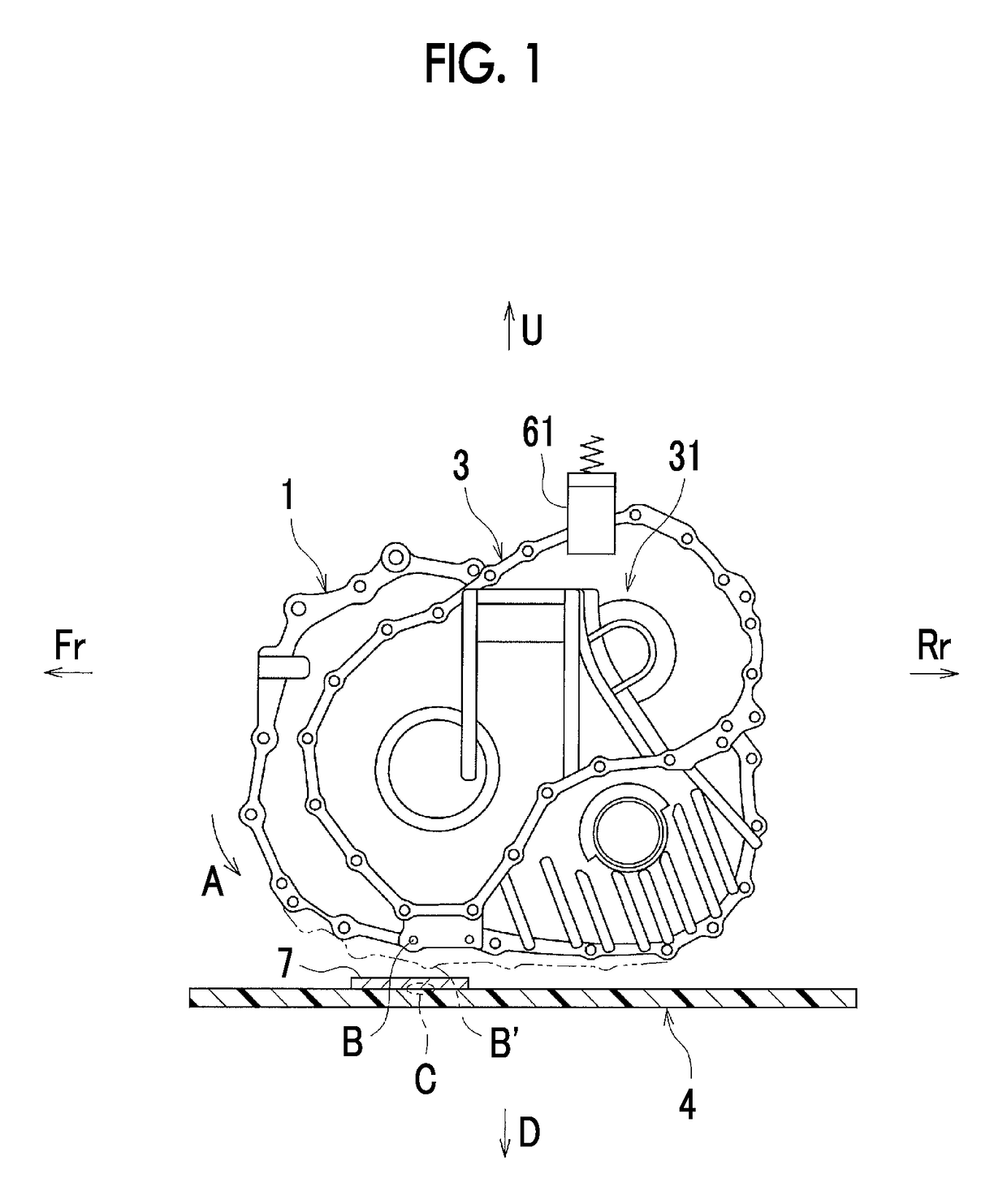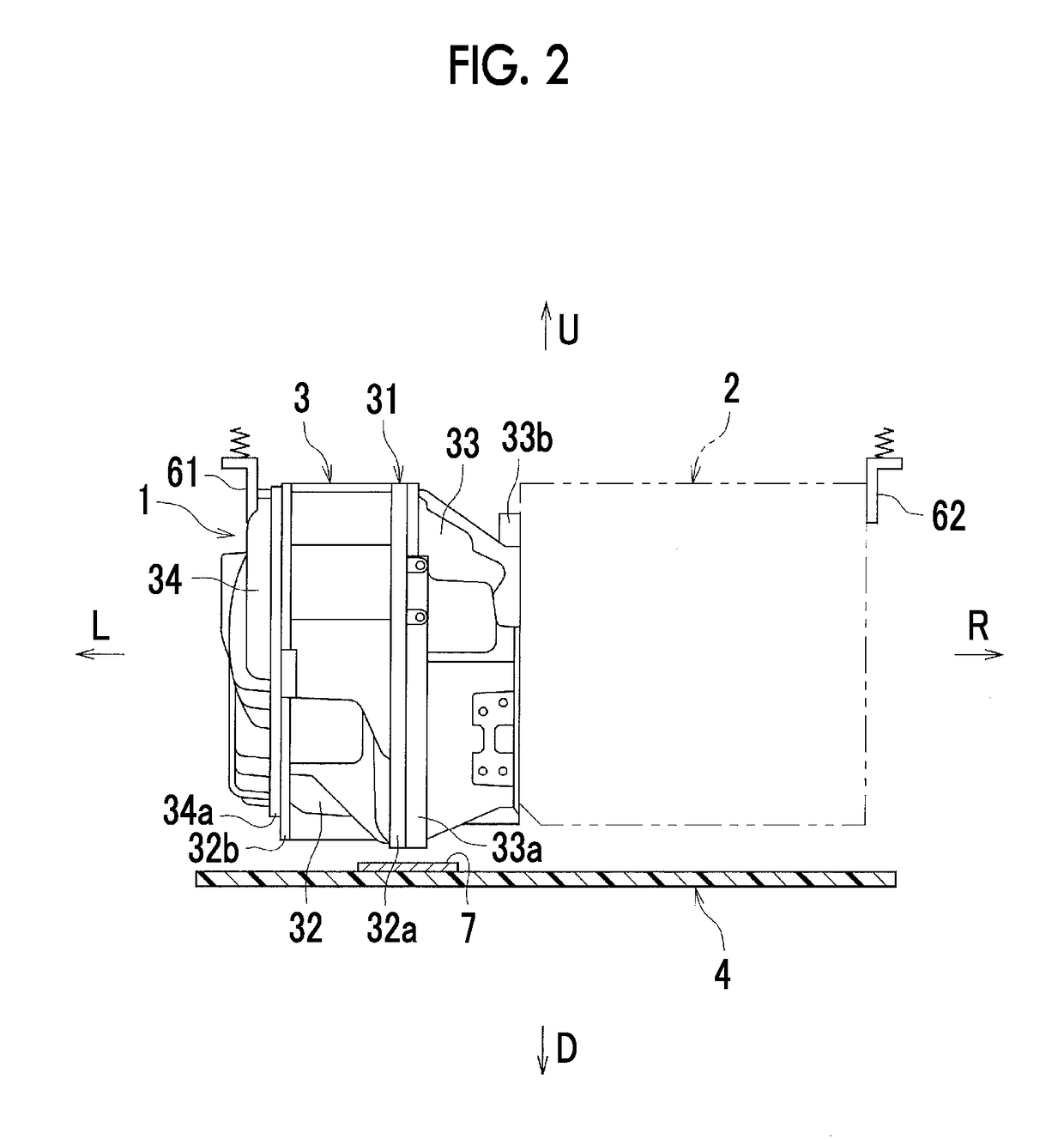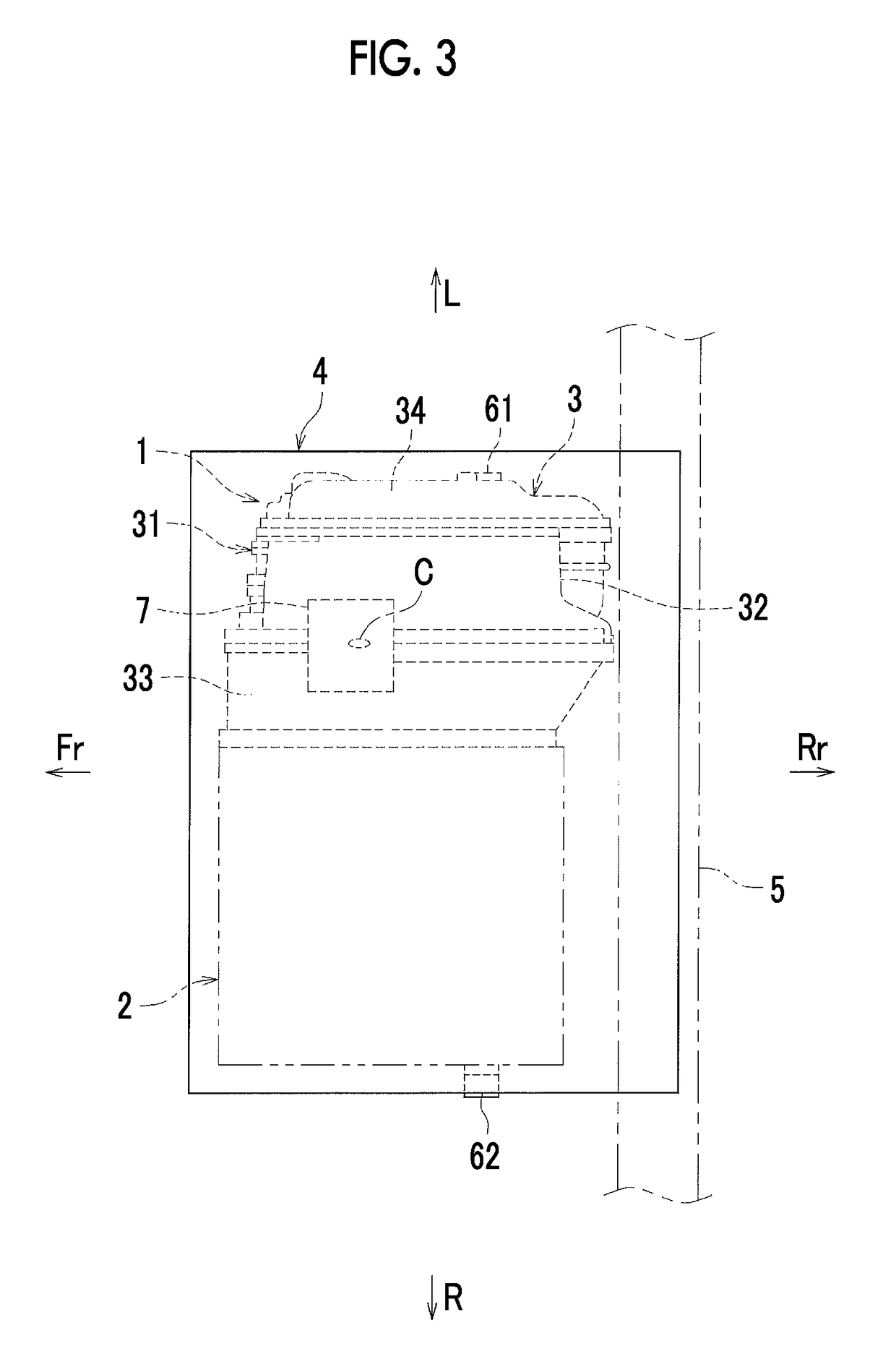Vehicle understructure
a technology for understructures and vehicles, applied in the field of understructures of vehicles, can solve the problems of undercover hole formation, road surface interference, and high fastening force of fastening parts, and achieve the effect of keeping the fastening force in the fastening part high
- Summary
- Abstract
- Description
- Claims
- Application Information
AI Technical Summary
Benefits of technology
Problems solved by technology
Method used
Image
Examples
first embodiment
[0028
[0029]Schematic Structure of Powertrain Unit
[0030]FIG. 1 is a side view illustrating an arrangement layout of a powertrain unit 1 and an undercover 4 related to the present embodiment. FIG. 2 is a back view (a view viewed from the rear of a vehicle) illustrating the arrangement layout of the powertrain unit 1 and the undercover 4. FIG. 3 is a bottom view illustrating the arrangement layout of the powertrain unit 1 and the undercover 4. In FIGS. 1 to 3, arrow Fr indicates the front of the vehicle, arrow Rr indicates the rear of the vehicle, arrow U indicates upward, arrow D indicates downward, arrow R indicates the right side of the vehicle, and arrow L indicates the left side of the vehicle.
[0031]As illustrated in FIGS. 1 to 3, the powertrain unit 1 has a structure into which an engine 2 (refer to an imaginary line of FIG. 2), a transaxle 3, and the like are integrally incorporated.
[0032]In the transaxle 3, a damper, a planetary gear, a power generating motor, a traveling drive...
second embodiment
[0052
[0053]A second embodiment will be described. Here, solely differences from the first embodiment will be described.
[0054]FIG. 4 is a side view illustrating an arrangement layout of the powertrain unit 1 and the undercover 4 in the present embodiment. As illustrated in FIG. 4, the undercover 4 in the present embodiment has a structure in which a shock absorbing material 8 made of rubber is further attached to an upper surface of the metal plate 7 attached to the upper surface of the undercover 4. The shape of the shock absorbing material 8 (the shape thereof in a plan view) is the same square shape as that of the metal plate 7. As means for attaching the shock absorbing material 8 to the upper surface of the metal plate 7, a resin clip, riveting, bolting, bonding, or the like is applicable.
[0055]The shape of the shock absorbing material 8 is not limited to the aforementioned shape, and is appropriately set. For example, the shape of the shock absorbing material 8 in a plan view m...
third embodiment
[0057
[0058]A third embodiment will be described. Here, solely differences from the first embodiment will also be described.
[0059]FIG. 5 is a side view illustrating an arrangement layout of the powertrain unit 1 and the undercover 4 in the present embodiment. As illustrated in FIG. 5, in the undercover 4 in the present embodiment, the metal plate 7 is attached to a portion of the lower surface of the undercover 4 and is reinforced. The position where the metal plate 7 is attached is the lower surface of the undercover 4 corresponding to the interference part C that faces the fastening part B of the transaxle 3.
[0060]According to the structure of the present embodiment, the same effects as those in the case of the first embodiment can also be obtained. In the present embodiment, a situation in which the road surface and the interference part C of the undercover 4 come into direct contact with each other can be suppressed with the metal plate 7. Therefore, the effect of restraining the...
PUM
 Login to View More
Login to View More Abstract
Description
Claims
Application Information
 Login to View More
Login to View More - R&D
- Intellectual Property
- Life Sciences
- Materials
- Tech Scout
- Unparalleled Data Quality
- Higher Quality Content
- 60% Fewer Hallucinations
Browse by: Latest US Patents, China's latest patents, Technical Efficacy Thesaurus, Application Domain, Technology Topic, Popular Technical Reports.
© 2025 PatSnap. All rights reserved.Legal|Privacy policy|Modern Slavery Act Transparency Statement|Sitemap|About US| Contact US: help@patsnap.com



